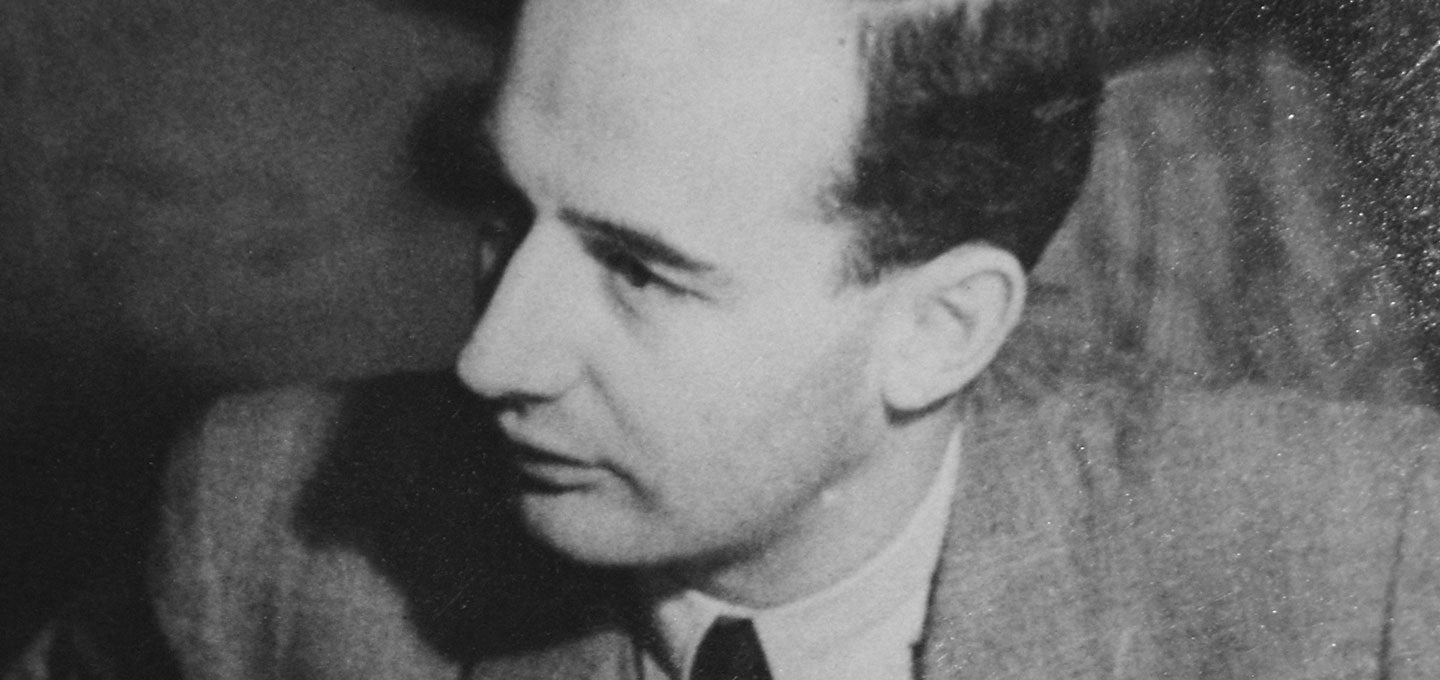Budapest’s Jewish population was under siege. By the spring of 1944, every other major Jewish community in Europe had been decimated, and Adolf Eichmann had come to Hungary determined to complete Hitler’s “Final Solution” before the war ended. He was briskly dispatching 10,000 to 12,000 Jews to the gas chambers every day.
Belatedly, the American government was trying to stop him. That spring, President Roosevelt sent Iver Olsen to Stockholm as an official representative of the American War Refugee Board.
Olsen was looking for a man willing to walk into the jaws of the Nazi death machine, someone who spoke both Hungarian and German, someone with an independent spirit who would not need much oversight or direction. One of the people Olsen met in Stockholm was Kalman Lauer. Lauer immediately recommended his young business partner, Raoul Wallenberg. For Wallenberg, Olsen’s offer was irresistible, an opportunity to accomplish something truly important. He agreed to go to Hungary, arriving by train in July 1944.
Wallenberg was technically attached to the Swedish embassy in Budapest, although at his insistence he was not subject to the usual restrictions imposed upon diplomats. His efforts over the next six months were daring, shrewd, remarkably inventive and immensely courageous.
In Budapest, Wallenberg quickly established an office and “hired” 400 Jewish volunteers to run it. He immediately ordered his staff to remove the yellow stars they wore to mark them as Jews, telling them, “You are now under Swedish diplomatic protection.” His mission to save what remained of the Hungarian Jewish population was under way.
Wallenberg invented a special Swedish passport, the Schutzpass. It was a colorful, imposing, official-looking document. With permission from no one, he announced that it granted the holder immunity from deportation to the death camps. Wallenberg distributed his Schutzpass to Jews indiscriminately. The Schutzpass alone is credited with saving 20,000 Jewish lives.
Using his American funds, Wallenberg scoured the city for buildings to rent. He eventually found thirty-two, which he declared to be “extraterritorial buildings” protected by Swedish diplomatic immunity. In an architecture class at the University of Michigan, Wallenberg had received a grade of “excellent” for designing a low-cost housing project that could fit 4,500 people in sixteen city blocks. In Budapest he found a way “to place 35,000 people in buildings designed for fewer than 5,000.”
Wallenberg’s “safe houses” saved thousands of Jewish lives, including those of a University of Michigan professor, Andrew Nagy, and his mother. Nagy, then fourteen years old, will always remember Christmas Eve 1944, when the residents of the safe house next door to his were rousted from their beds, marched to the Danube River, and shot by the Nazis. Jews were frequently tied together three in a row on the bank of the Danube. The middle person was shot, sending all three into the freezing water to drown. A woman from Wallenberg’s office recalled an occasion when Wallenberg heard that Hungarian Nazis were shooting women and children at the river. He asked his staff who could swim. “We went—it was a cold night—and jumped into the Danube—the water was icy cold.” They saved fifty or sixty people.
In Budapest Wallenberg worked constantly, sleeping only four hours a night. He was an inspiration to the Swiss and Swedish neutrals working on similar humanitarian missions, to the Red Cross, and to those who worked at his side. But perhaps even more important was his ability to revive hope in those who believed they were doomed.
Wallenberg was well known to the Nazis, whom he bribed, manipulated, confronted, and harassed tirelessly. Eichmann referred to him as “Jewdog Wallenberg.” As late fall turned to winter, Wallenberg’s life was increasingly in danger. One day his car was blown up. He began sleeping in a different place each night.
With Soviet troops approaching, the Nazis stepped up their attacks on Budapest’s Jewish population. In the last days of the occupation, German troops, along with Hungarian Nazis, assembled around the Jewish ghetto in preparation for a massacre. When he learned of the plan, Wallenberg confronted the Nazi commander, persuading him that if he allowed the attack on the ghetto to go forward, Wallenberg would see that he was hanged for crimes against humanity after the war. The frightened Nazi, who knew Hitler was about to be defeated, called off the assault. The lives of 70,000 Jews were saved.
The threat did not end with the Nazi retreat. As the Germans began to flee Budapest, Hungarian Nazis ruled the streets, killing Jews at random. The once-beautiful city had become a terrifying hellhole.
For two months, Wallenberg had heard Soviet guns on the outskirts of Budapest. Knowing that the army would soon be moving into the city, he began practicing his primitive Russian. He hoped to meet with Soviet leaders to begin planning the rehabilitation of Budapest’s shattered society.
On a mid-January morning in 1945, twenty Soviets arrived at Wallenberg’s door. Speaking haltingly in Russian, Wallenberg explained his mission to rescue the Jews and asked to be taken to the highest Soviet authorities. He spent that night at Russian headquarters in Budapest. The next day he returned home with an escort to pick up his belongings. Friends described him as calm but with an edge in his voice, assuring them he would be back in about a week. Wallenberg’s friends and family never saw him again.

